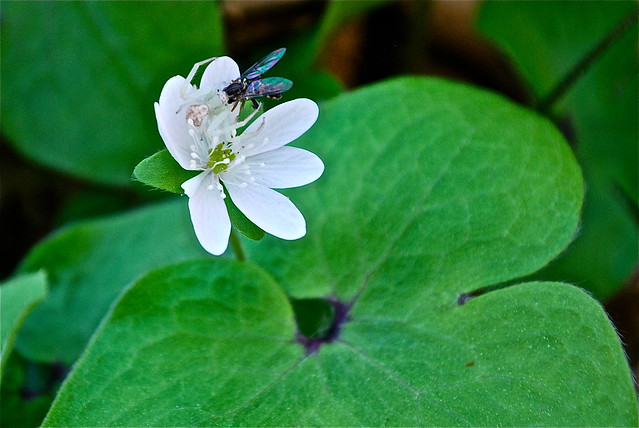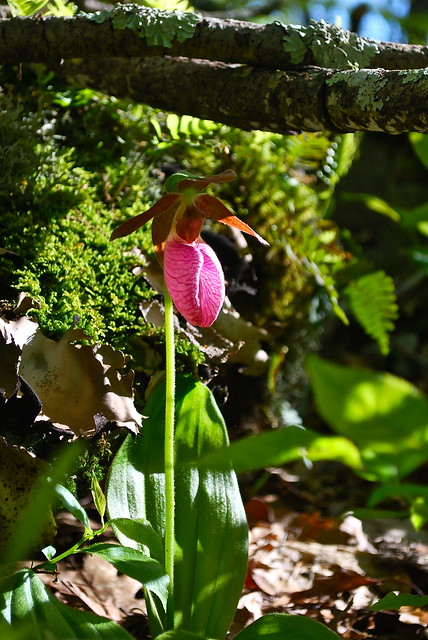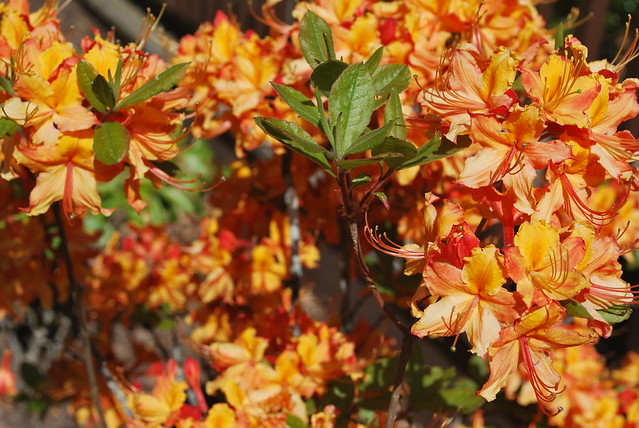Open fires are prohibited throughout the park from midnight to 4 p.m. through April 30 per the 4 p.m. Burning Law. This includes wood and charcoal. Gas is permissible. Campground fires are allowed during the restricted time if a camp host is on duty and signage to that effect is posted in the campground. Failure to observe the 4 p.m. Burning Law can result in a fine. Contact the Park Office for additional information.
Read Our Blogs
Full Moon of the Month: A Blue Flower Moon
This is the time of year when spring reaches its budding maturity. The landscapes are lush again, birdsong echo through field and forest, insects return, all impacted by an abundance of flowers.
Flowers of all shapes and colors have been blooming away rampantly for the past month. And so it is fitting the full moon of May 21st is the Flower Moon.

April's Full Moon rising above a tree
Birds, butterflies, mammals and moths delight in the flowers, as do spiders. The sweet scent of flowers lulls around this time of year, pleasant odors wafting and riding the breeze.

Wild geranium after a spring rain at Fairy Stone State Park

This hepatica flower enticed a predator as well as it's prey
Historically, and still to this day, the warmth of Spring, more daylight, and the return of so many colors is an incredibly welcoming sight after winter's cold hold.

A pink lady slipper at Grayson Highlands State Park
Flowers are such a pleasant symbol of Spring, fertility, and fresh life that we get two moons in a row inspired by the pollinating petaled parts of plants. The Pink Moon in April was named for the phlox flower, followed by the Flower Moon for so many more.

Flaming azalea at Hungry Mother State Park
A Seasonal Blue Moon
You’ve probably heard the phrase, “that only happens once every blue moon,” about a rare or unusual event. This Flower Moon happens to be a seasonal Blue Moon. It has nothing to do with its color and isn’t a blue moon based on the most familiar definition of the term, which is when we have two full moons in one month.
Instead a seasonal Blue Moon fulfills the less known criteria of an equally uncommon phenomena where we have four full moons in one season. Typically we have three full moons in the approximate 90 days of a season. It is a rare thing to have four full moons fall within a season, and the third is called a blue moon. So we'll have one more full moon in spring, just before the summer solstice.
This moon is also called the Milk Moon, having connections to the calving season, a tie to our farming roots. Milk, of course, being another symbol of fresh life and an organic connection to spring. The Planting Corn Moon is yet another cultural moniker for this moon, tying into humanity’s agrarian roots as well.
The Moon and it's many names remind us of our connection to the land, our planet, and how closely in tuned our ancestors were to the changes of each season and month.
If you have read the article and have a question, please email nancy.heltman@dcr.virginia.gov.
Search for blogs
By Park
Categories
Cabins
Camping
Fishing
History and Culture
Other
Programs and Events
Trails
Volunteers
Water Fun
Archive
2024
2023
2022
2021
2020
2019
2018
2017
2016
2015
2014
2012














